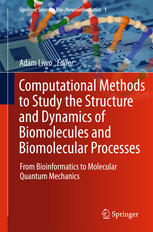

Most ebook files are in PDF format, so you can easily read them using various software such as Foxit Reader or directly on the Google Chrome browser.
Some ebook files are released by publishers in other formats such as .awz, .mobi, .epub, .fb2, etc. You may need to install specific software to read these formats on mobile/PC, such as Calibre.
Please read the tutorial at this link: https://ebookbell.com/faq
We offer FREE conversion to the popular formats you request; however, this may take some time. Therefore, right after payment, please email us, and we will try to provide the service as quickly as possible.
For some exceptional file formats or broken links (if any), please refrain from opening any disputes. Instead, email us first, and we will try to assist within a maximum of 6 hours.
EbookBell Team

4.1
60 reviewsSince the second half of the 20th century machine computations have played a critical role in science and engineering. Computer-based techniques have become especially important in molecular biology, since they often represent the only viable way to gain insights into the behavior of a biological system as a whole. The complexity of biological systems, which usually needs to be analyzed on different time- and size-scales and with different levels of accuracy, requires the application of different approaches, ranging from comparative analysis of sequences and structural databases, to the analysis of networks of interdependence between cell components and processes, through coarse-grained modeling to atomically detailed simulations, and finally to molecular quantum mechanics.
This book provides a comprehensive overview of modern computer-based techniques for computing the structure, properties and dynamics of biomolecules and biomolecular processes. The twenty-two chapters, written by scientists from all over the world, address the theory and practice of computer simulation techniques in the study of biological phenomena. The chapters are grouped into four thematic sections dealing with the following topics: the methodology of molecular simulations; applications of molecular simulations; bioinformatics methods and use of experimental information in molecular simulations; and selected applications of molecular quantum mechanics. The book includes an introductory chapter written by Harold A. Scheraga, one of the true pioneers in simulation studies of biomacromolecules.